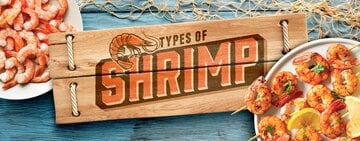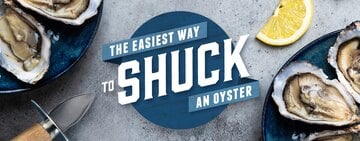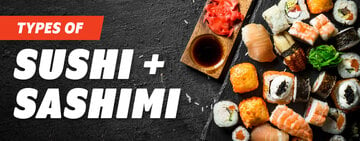How to Eat Blue Crab
If you're a seafood lover, then you've probably heard of the famous Maryland blue crabs. These types of crabs are known for their sweet and succulent meat, making them a favorite among seafood enthusiasts. Eating hard shell Maryland blue crabs is a unique experience that involves cracking open the hard shell to reveal the tender meat inside. Whether you're hosting a crab feast or picking crab meat as an ingredient for crabcakes, there is a right way to process blue crabs. We'll take a closer look at the art of picking hard shell Maryland blue crabs and share some tips to make the job easier.
Shop All Hard Shell CrabsHow to Pick and Eat Blue Crab
Watch our video for a step-by-step tutorial that teaches you how to pick a Maryland blue crab. This tried-and-true method ensures you don't leave any meat behind!
How to Pick Blue Crabs (the Right Way)
First of all, what is crab picking? When you "pick" a crab, you are taking apart the shell and cracking the legs to get to the meat. You can grab a mallet and start whacking, but you'll end up with a huge mess and the meat will be full of shell fragments. Unlike snow crab and Alaskan king crab legs, hard shell blue crabs require more effort to reveal the maximum amount of crab meat. Follow our crab-picking steps and you'll be an expert in no time. You'll need a crab mallet, a butter knife, and plenty of newspaper to cover your work area.
How to Use the Mallet
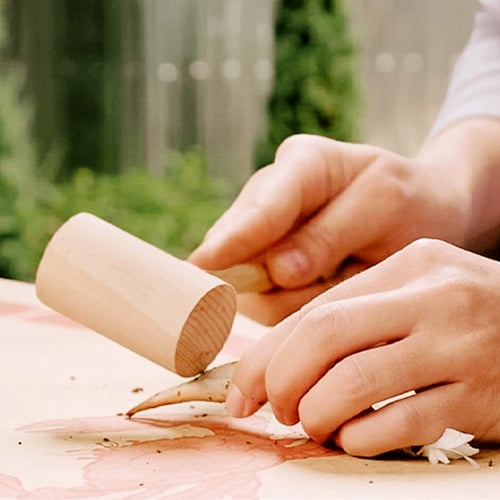
Before you jump in, we have a few words about the crab mallet. It's tempting to wield the mallet like Thor's hammer, but you'll get the best results if you use more restraint. Hold the mallet at an angle just above your target so you are striking with the very edge (not the entire surface). Hit firmly but with control. This will help you crack the crab claws more precisely so you don't accidentally smash them. You can also place the edge of a butter knife where you want to make a crack and tap the knife with the mallet.
Follow our steps below to start picking:
- With the crab in hand, remove the large claws and three middle legs by pinching them at the base and twisting. Don't remove the backfins yet.
- To crack the claws, use the edge of the mallet to hit firmly but precisely just above the pinchers. Do this on both sides of the claw.
- You should now be able to gently pull apart the claw shell to reveal a chunk of meat.
- Perform the same steps on the upper joint of the same leg.
- For the small legs, use gentle pressure to snap them in two and pull out a small piece of meat.
- Once you are finished with the claws and legs, move on to the body.
- Peel back the apron found on the underside of the shell.
- Detach the top shell from the bottom portion.
- Remove the gills by peeling them away from either side of the body and discard them.
- You will also see a small amount of viscera (intestines and heart) in the center of the body cavity. Discard this as well.
- Crack the body of the crab down the center with your hands so you have two halves.
- Gently break off the backfin and pull out the jumbo lump meat from the body (many say this is the best part).
- Pinch and pick out any remaining crab meat from the delicate inner shells of the body.
- Move on to your next crab!
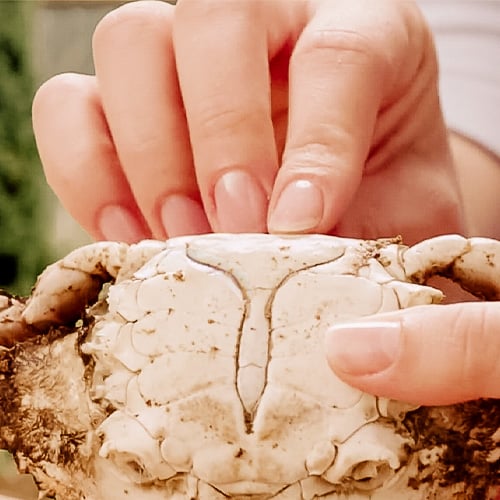
Shown here: The apron is found on the underside.
How to Cook Blue Crab
You can cook your own blue crabs very quickly with a stock pot and a few seasonings (Old Bay is is a popular choice). Follow our instructions below:
Ingredients to Cook Blue Crab
- A dozen live blue crabs
- 1 tablespoon of salt
- 2-4 tablespoons of Old Bay Seasoning
Cooking Blue Crab
- Fill six-quart pot 2/3 full with water and bring to boil.
- Add salt and Old Bay to water.
- One by one, add live crabs with claws attached to pot and cover. Keep in water for 8-10 minutes or until cooked through. Fully cooked blue crab is bright red-orange in color and has opaque meat.
- Drain crabs with colander.
- Let cool and transport to serving receptacle.
Tips for Buying Crabs

When it comes to buying live crabs for your restaurant, there are a few key factors to consider. To help you make the best choice for your establishment, here are some essential tips to keep in mind:
- Size Matters: Consider the size of the crabs you need for your dishes. Larger crabs are typically preferred for crab cakes and other meaty dishes, while smaller crabs are great for soups and sauces. Determine the size that best suits your menu and portion sizes.
- Source of the Crabs: It's important to know where your crabs are coming from. Look for reputable suppliers who can provide you with high-quality, fresh crabs. Local suppliers are often a good choice because they can offer you the freshest catch and support the local economy. If seafood sustainability is important to you, sourcing blue crabs from responsibly managed fisheries and supporting conservation efforts can help ensure their long-term viability as a seafood option.
- Check for Freshness: When buying live crabs, always inspect them for freshness. Look for crabs that are active and lively, with shiny shells and intact limbs. Avoid crabs that appear sluggish or have cracked shells, because these signs may indicate poor quality or mishandling.
- Seasonal Availability: Keep in mind that the availability of live crabs can vary throughout the year. Different species of crabs have peak seasons, so it's important to know when your desired crab is in season. This will ensure that you can get the freshest and most flavorful crabs for your dishes.
- Quantity and Storage: Consider the number of live crabs you need for your restaurant. Ensure that you have adequate storage space, such as a live tank or cooler, to keep the crabs fresh and alive until they are prepared. Remember that crabs are considered shellfish, a TCS food, so it's crucial to handle and store them properly.
- Pricing and Budget: Determine your budget for purchasing live crabs and compare prices from different suppliers. While it's important to find a good deal, prioritize quality over price. Fresh, high-quality crabs will enhance the taste and reputation of your dishes, ultimately benefiting your business in the long run.
Hard Shell Crabs FAQ
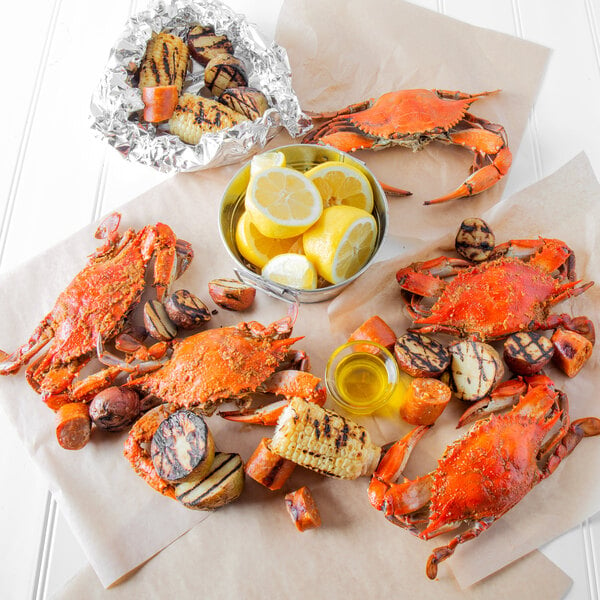
If you want to know more about Maryland blue crabs, check out some common questions below:
What Is a Maryland Blue Crab?
Maryland blue crabs are typically caught in the Chesapeake Bay and its tributaries, where they thrive in brackish waters. These crabs have a distinctive blue coloration, which is where their name comes from. They are prized not only for their taste but also for their versatility in various dishes, such as crab cakes, crab soups, and crab dips.
What Is Crab Mustard?
Crab mustard is a soft yellow substance that is located in the body cavity of the crab. Despite its name, crab mustard is not actually related to the condiment, but rather refers to the crab's hepatopancreas, which serves as its digestive gland. While some people may be unfamiliar with it, crab mustard is highly prized in culinary circles for its rich and savory flavor. It's a regional Maryland custom to keep a slice of buttered bread nearby while you pick crabs and smear a spoonful of crab mustard onto the bread. Try it if you're feeling adventurous, but experts recommend using moderation when eating crab mustard. It's a digestive organ and may contain small amounts of toxins depending on where the crabs were harvested.
What Parts of the Crab Do You Eat?
The edible parts of a cooked blue crab include the meat from the claws, legs, and body. Even the yellow mustard inside the crab is edible. The gills and viscera are inedible and should be discarded when you pick a crab.
Can You Use Imitation Crab Instead of Blue Crab?
Full disclosure, there is no match for fresh crab meat from a Maryland blue crab. That being said, you can use imitation crab meat in crabcakes, sushi, and other dishes for a more affordable replacement. It won't be exactly the same, but if you use the right combination of ingredients and seasonings, you can create a tasty alternative.
Whether you're a seafood restaurant looking to add a signature dish to your menu or a seafood distributor looking to offer a unique product, Maryland blue crabs are a versatile and profitable option for commercial applications. Keep our tips in mind and always purchase live crabs from reputable suppliers.

